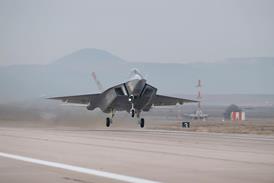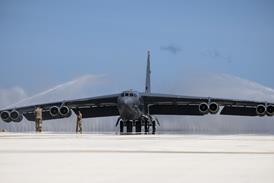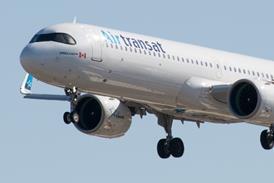French advanced air mobility (AAM) start-up Aura, which is exhibiting at Aero Friedrichshafen this week, has taken a rather different route to market to many of its competitors. The Toulouse-based company’s flagship in-gestation product is the 19-seat hybrid Electric Regional Aircraft, or ERA, which it hopes to fly by early 2027. In the meantime, it has been developing rather more conventional aircraft.
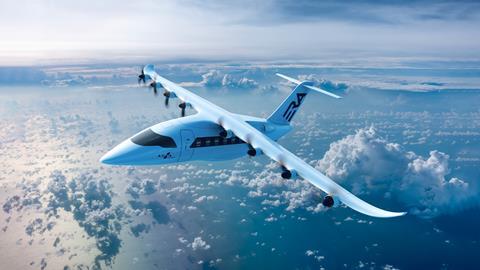
Just before the end of 2024, the Integral R, the first variant of its two-seat trainer/aerobatic aircraft family, achieved certification. Two other versions, the sporting S and the electric-powered E, are awaiting approval from the regulator – the E made its first flight also in December, while the S will return to flight testing in April ahead of a targeted certification later this year.
Aura is now moving ahead with volume assembly of the Integral R, which has been in build since 2019, at its Francazal airport site, as the first aircraft reach customers. It means that the company will gain invaluable production experience, while revenue from sales generates cash and helps fund Aura’s more ambitious hybrid-electric project.
Chief executive Jeremy Caussade says the strategy – decided when he founded the company with two colleagues in 2018 – has proved a sound one as other AAM pioneers have begun to run short of cash and some – including electric vertical take-off and landing developer Lilium – appear to have reached the end of the road.
“Time to market is very long when you are designing a whole new mode of air transport, and this has been behind the problems we have seen in the eVTOL sector,” says the former Airbus executive. “Our approach from the beginning was always to be in the final stages of developing the ERA as a certified production company. We are preparing ourselves to be as efficient as possible before we start ERA production.”
Aura expects to deliver between 12 and 15 Integral Rs in 2025, with production of the wood-carbon aerobatic-capable type ramping up to around two per month next year and three to four per month by the end of the decade as S and E variants are added to the mix.
The company is sticking to its target of late 2026 to have the Integral E, which is powered by a Safran ENGINeUS electric motor and lithium-ion batteries, ready for delivery. That would likely make it the second electric aircraft in Europe to be certificated after the Pipistrel Velis Electro.
However, as a European Union Aviation Safety Agency CS-23 category aircraft, the Integral E – which will have a battery life of almost 1h and will be rechargeable in 30min – is a much more complex design than the Slovenian-built light sport, Caussade says, noting that in flight testing it has been behaving very similarly to the other Integral variants.
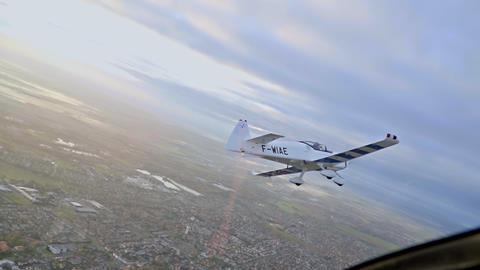
Next on the line – if everything goes to plan – will be the ERA, one of a number of sustainably powered contenders intended to revitalise a commuter market once dominated by the likes of the Beechcraft 1900, De Havilland Canada Twin Otter, Dornier 228 and Fairchild Metroliner but that has seen very little new aircraft production for decades.
Since the programme’s launch in 2021, the ERA has secured high-profile customers. They include Maltese private aviation operator Elit’Avia, which has committed to 28 aircraft, regional cargo airline Alpine Air Express, which last year signed a letter of intent (LoI) to purchase up to 75, and US charter outfit JetSuiteX, which agreed an LoI for 50 examples. US commuter carrier Republic Airways is a “strategic advisor” to the programme, although it has not formally committed to aircraft.
Aura has recently pushed back its targeted entry into service for the ERA, which will be a hybrid able to fly on kerosene rather than a fully electric aircraft, to “before 2030”. Production of the first parts for the aircraft, which will be certificated in the EASA CS-23 category, will begin this year.
Caussade says the company will announce at the Paris air show in June the closing of a funding round that he says should provide it with enough cash to bring all the Integral models to full production, bring on stream new factories at Francazal and in Florida, and build a flying prototype of the ERA. Once that is achieved, “we will be in good shape for an IPO [initial public offering] or at least be on a very secured path to raise more”, he says.
Investors in the company have included French electricity giant EDF, while Aura has raised around €134 million ($139 million) in non-equity finance. Caussade notes that Aura is the first aerospace company to be awarded money from a French innovation fund aimed at promoting sustainable technologies. The company also last year launched its first Europe-wide crowdfunding campaign.
To preserve cash, Aura will partner with property companies to erect and rent its new-build factories. Last year the Toulouse city council gave the go-ahead for the construction of a 20,000sq m (215,000sq ft) complex, capable of producing 150 aircraft a year, to replace its existing hangar at Francazal in the next two years. Meanwhile, Aura will open a factory twice that size at Daytona Beach airport in Florida, where it will assemble aircraft for the North American market.
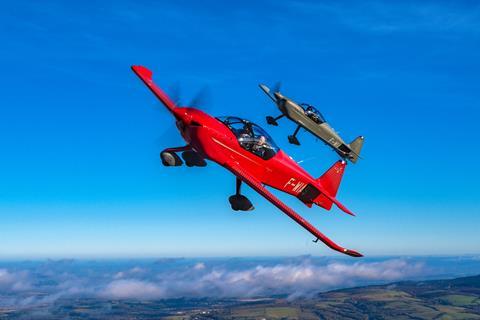
Caussade expects Integral customers to be drawn from both the owner pilot and flying club community as well as from professional training schools. With the electric version of the aircraft, he expects many early customers to be from the military market as that sector strives to make its operations more sustainable, and update fleets that often rely on very old designs.
Although it has not announced a formal order, Airbus Flight Academy Europe, a unit of the airframer that provides basic instruction for pilots destined for the French air force and navy, is collaborating on the development of the Integral E variant following the signing of a memorandum of understanding at the 2023 Paris air show.
As for the ERA, Aura and Sweden’s Heart Aerospace are the two companies furthest ahead in the race to certificate the first clean-sheet hybrid-electric aircraft with double-digit seats (France’s VoltAero, for example, is among those developing nine-seat electric designs). With negligible competition from established aerospace players, the door is open for a market entrant to potentially disrupt regional air travel in a major way.
That is providing, of course, they can continue to raise finance, keep the regulator onside during a tricky certification process, and, perhaps most crucially, industrialise production by managing a supply chain and demanding customer delivery deadlines. With its two-step business model of first establishing itself in the light trainer market, Aura believes it will have learned many of those lessons by the time the ERA is ready for market.




